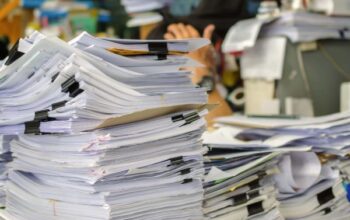The structure blocks for articles of clothing and style on the planet are textures. The quality and strength of a bit of piece of clothing is reliant on its fundamental raw material for example the fabric.
Originators and makers lay extraordinary focus on the choice of the best quality textures for their items and style attire.
Instant articles of clothing that are delivered in mass amounts in industrial facility set-ups have various sorts of creation measures relying on the texture they are made up from.
Keeping in see the significance of textures in the material world, it is fundamental to comprehend its assembling cycle too. This understanding permits us to all the more likely check the quality and organization of the texture and improve a determination for our piece of clothing needs in like manner.
There are a couple of essential advances engaged with fabric manufacturing and distribution. A short portrayal of each progression is given below.
The first step is to manufacture and produce yarn locally
Like the texture is a crude material for attire, yarn is the crude material for texture. It is the fundamental prerequisite to begin the assembling of any sort of texture.
Yarn is acquired from strands which may either be engineered or characteristic. In view of the kind of texture you need to deliver, the fiber is chosen and transformed into yarn and string.
The cycle of yarn creation begins from collecting of the cotton crop or some other engineered fiber and sending it to the turning units.
In the more seasoned occasions, turning was finished by hands on a turning wheel. In any case, with so much mechanical headway throughout the long term this cycle in now completely motorized and computerized.
As the strands are put over the turning wheels that are pivoting at a rapid, they are woven together to shape a string or spun filaments that are gathered on a lengthened reel or chamber called the bobbin.
This is the cycle by which string or yarn is made and the bobbins are fit to be moved to the following machine for texture creation.
The second step is known as joining
First alternative: The process of weaving
This is one of the most broadly utilized techniques for texture producing. In the old occasions weaving was finished by hands available weaving machines. Indeed, even today, hand woven fabric is made in numerous pieces of the world. It is significantly more important and costly when contrasted with machine woven textures process.
The weft and the warp process
The way toward weaving begins by taking two separate arrangements of string or yarn. The originally set is known as the twist while the subsequent set is known as the weft or the filling. The joining of these two arrangements of yarns brings about the creation of the texture.
The loom process
The edge or machine that holds the twist string set up during the cycle is known as the loom. It traverses the twist from front to in a longwise heading. The weft is then gone through the twist in a confound course and occupy in the spaces to make a smooth tight woven surface.
The yarn that is produced using regular materials is generally decided on weaving measure. Silk, fleece, cotton and nylon are most broadly utilized strings in this cycle around the world.
The second alternative: the process of knitting
Aside from woven textures, the business likewise utilizes materials that are sew. With various qualities, a weaved texture is viewed as agreeable, adaptable and warm.
Throughout the long term a great deal of adaptability has been added to this texture through development and method headway. Sewn textures have extraordinary and assorted properties including extending ability or flexibility, protection from wrinkles, smooth and more tight fitting when contrasted with their woven partners.
These textures are undeniably utilized for home goods and upholstery necessities.
Sewing measure additionally begins with yarn as the essential crude material. Rather than the interweaving cycle, the yarn experiences a winding or bendy way and results in development of even lines or circles.
The Wale
The longwise running circles that interlock together to frame lines are called grains. It is like a twist in the weaving cycle.
The Course
A course resembles the weft or filling part of the woven texture. It involves the yarn circles that are stumbling into the course.
Types of knitting
There are two types of sewing measures. One is known as the weft sewing while the other is known as the twist sewing. The previous uses one long strand of yarn to stumble into the texture while the last includes numerous yarns or strings framing ridges that run a vertical way of the texture.
Sew is additionally a variety of weaving and is generally done by hand.
Third alternative: the non-woven process
Aside from the previously mentioned, the textures can likewise be delivered by interlocking and holding of the yarn strands through different cycles like synthetic methods, solvents, warm activities and mechanical techniques.
Staple non-woven
The fundamental cycle includes turning of the filaments and cutting into little pieces. These are then stuffed into bundles which can be spread consistently over a transport line by the checking cycle.
The filaments are then bound together through pitch or a warm activity. These are the staple non-wovens. The other classification is the spun laid non-woven texture.
Spun laid non-woven
This is a marginally extraordinary cycle which includes filaments that are spun and spread to a web in an immediate way. The dispersal of filaments is done through air streams or redirectors. The spun laid textures are additionally reinforced utilizing gum or warm strategies.
The Finishing Process
When the texture has been woven, weaved or reinforced, it is accessible for the last advance of assembling. This is the completing cycle.
Greige
The texture that has been newly arranged and taken off from the loom is called greige. It is frequently a terrible looking constant spread of texture that is stained and contains sinewy particles and contaminations.
Along these lines a cleaning cycle is important to make the texture fit for use for different material and clothing purposes.
Fading
The principal thing that this greige experiences is fading to chop down any staining and get consistency it.
Evacuation of debris and impurities
The texture is then given treatment with different cleaners and synthetic compounds for the expulsion of a flotsam and jetsam including waxes, oils and seed particles.
Your fabric is ready!
After the last cleaning is done, the texture is fit to be utilized for different material and clothing creation purposes.




